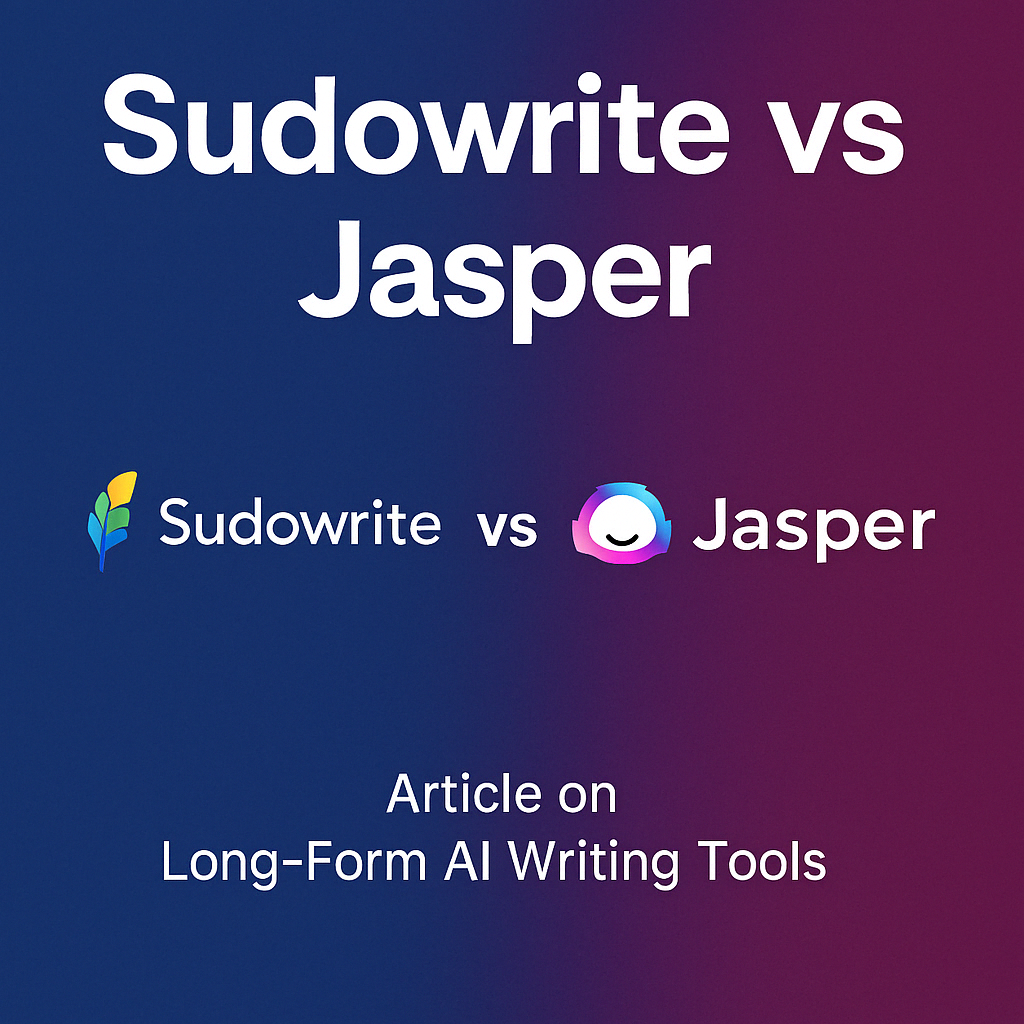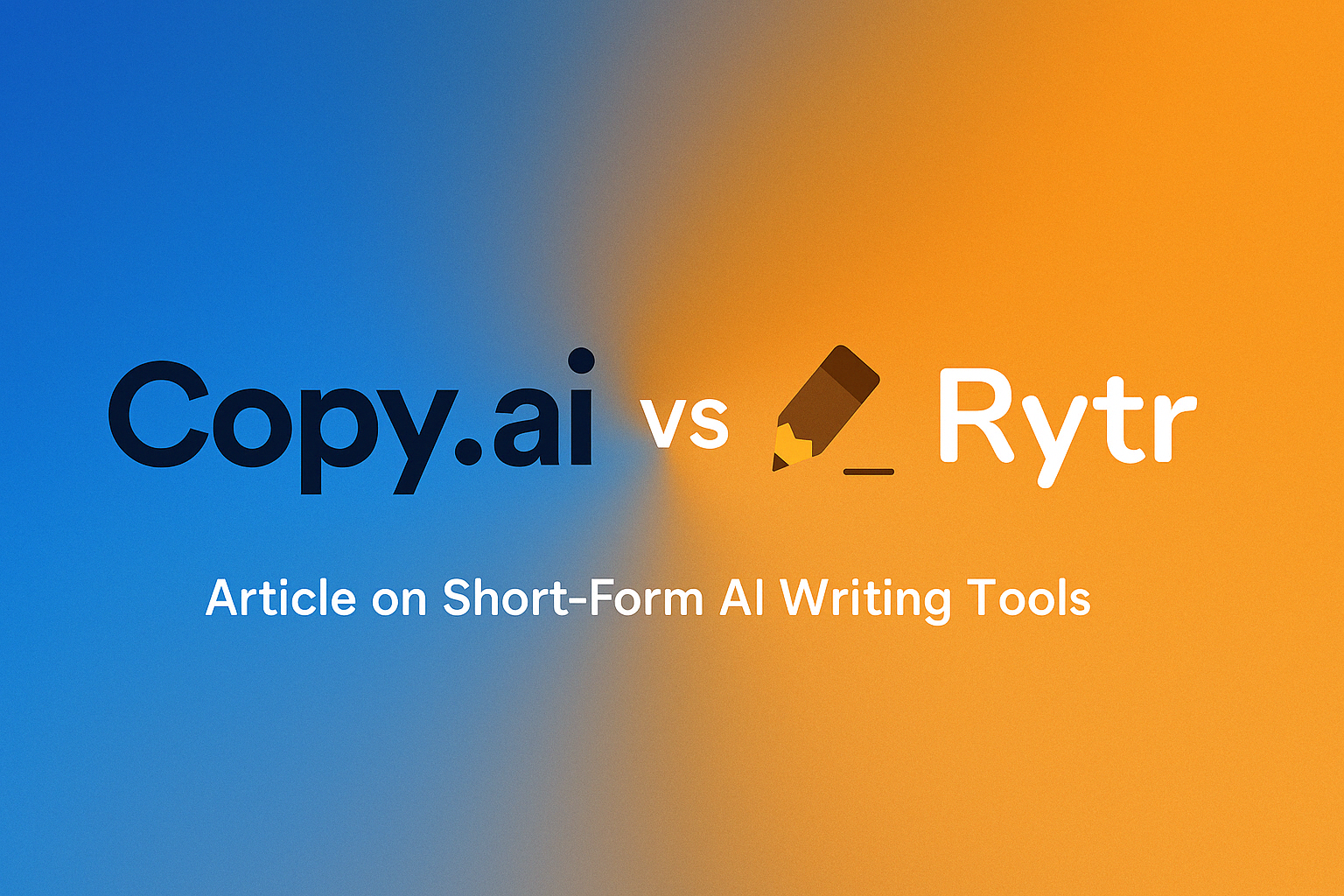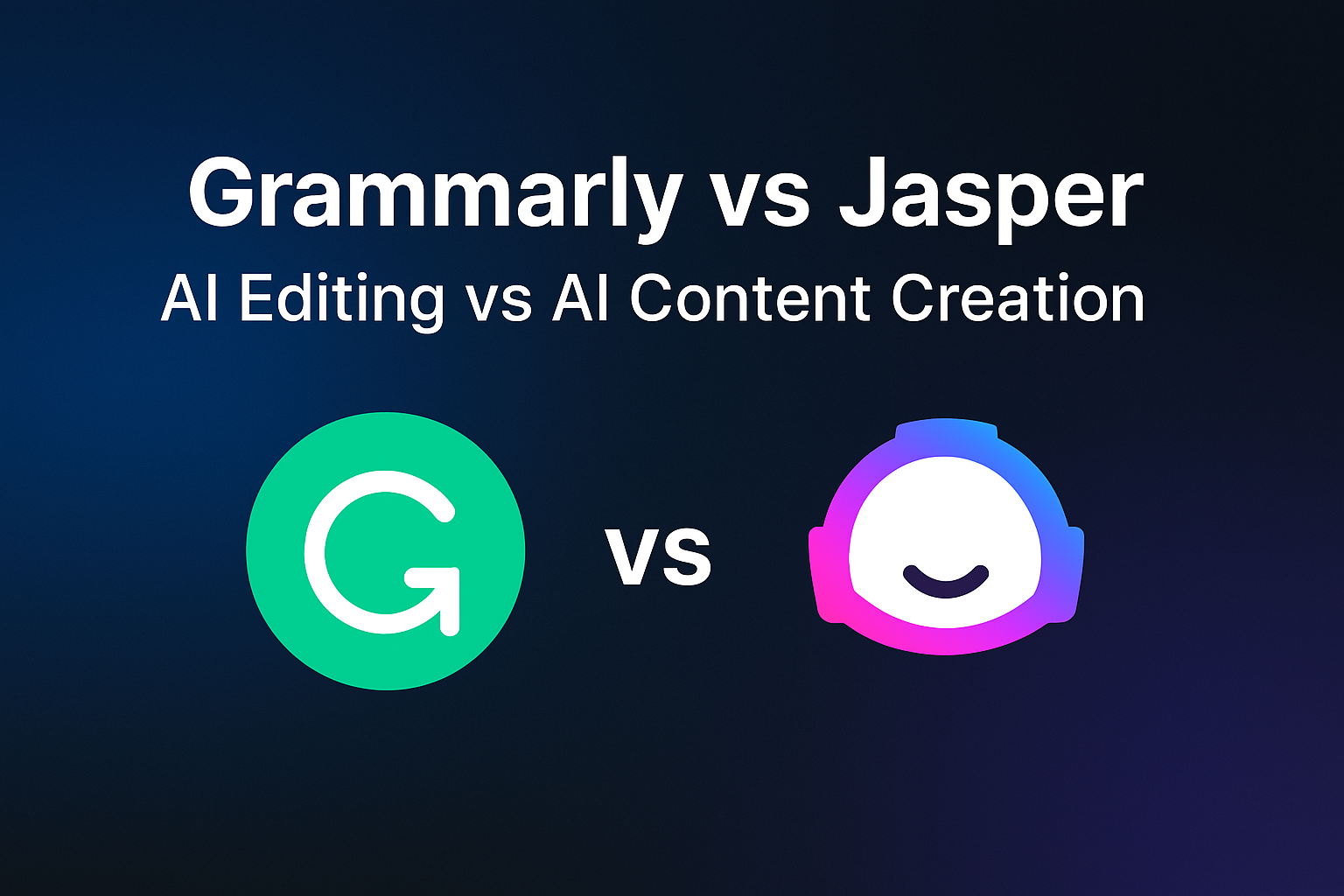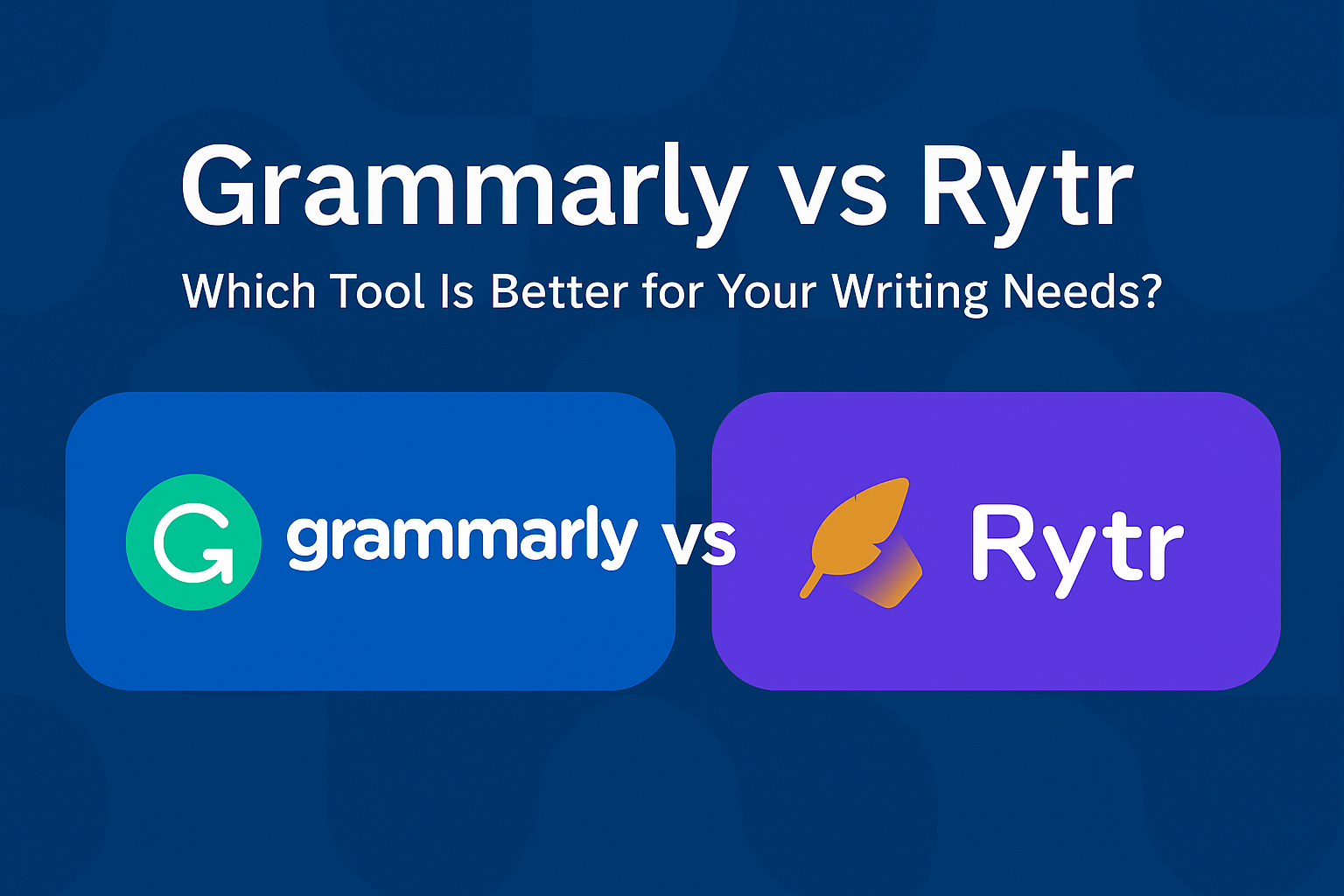QuillBot vs Rytr (2025): Which AI Writing Tool Should You Choose?
Choosing between QuillBot and Rytr can be tricky. Both are popular AI-powered writing assistants, but they serve slightly different needs. QuillBot is widely known for its powerful paraphrasing and grammar tools, while Rytr shines in content generation and templates for marketing and SEO. This in-depth comparison will help you decide which tool fits your workflow best in 2025.
🔍 Jump to ComparisonQuillBot vs Rytr: Quick Overview
Before diving into the detailed comparison, let’s first understand what makes QuillBot and Rytr popular in the AI writing space. Though both are writing assistants, their core focus is different: QuillBot specializes in paraphrasing, grammar correction, and academic support, while Rytr is designed for content generation, templates, and SEO-friendly writing.
🧠 QuillBot
QuillBot is best known for its paraphrasing tool, which helps rephrase sentences while keeping the original meaning intact. In addition, it offers Grammar Checker, Citation Generator, and Summarizer, making it especially popular among students, researchers, and professionals who need to polish academic or formal writing. With a simple interface and integrations like Google Docs and Microsoft Word, QuillBot has become a go-to for anyone looking to improve readability and avoid plagiarism.
🔗 Explore more: Best Free AI Writing Tools
✍️ Rytr
Rytr is an AI writing assistant built for content creators, marketers, and small businesses. Unlike QuillBot, which focuses on rewriting, Rytr provides 40+ use-case templates such as blog ideas, ad copies, product descriptions, and email outreach. It supports 30+ languages and comes with built-in SEO tools, making it ideal for producing fresh, engaging content at scale. With its affordable plans and intuitive dashboard, Rytr has become a strong choice for freelancers and teams who need quick content generation.
🔗 Related guide: Best AI Tools for Bloggers
🔍 QuillBot vs Rytr: Features Comparison
Here’s a detailed feature comparison between QuillBot and Rytr, highlighting their strengths and limitations across writing, integrations, and unique tools.
| Feature | QuillBot | Rytr |
|---|---|---|
| Paraphrasing Modes | 7+ modes (Standard, Fluency, Creative, Formal, etc.) | Basic rewriting within templates, less advanced |
| Grammar & Style | Built-in grammar checker & sentence suggestions | Basic grammar correction; focus is on content creation |
| Templates | No templates, focuses on rewriting and citations | 40+ templates (ads, blogs, emails, product copy) |
| SEO Tools | No dedicated SEO tools | SEO analysis & keyword suggestions built-in |
| Citations & Academic Tools | Citation Generator, Summarizer, Translation | Not available |
| Multi-language Support | 25+ languages | 30+ languages |
| Integrations | Google Docs, Microsoft Word, Chrome Extension | Browser app, WordPress, team collaboration |
💰 Pricing & Plans: QuillBot vs Rytr
Both QuillBot and Rytr offer free versions with limitations, plus affordable premium plans. Here’s a breakdown of their pricing in 2025:
| Plan | QuillBot | Rytr |
|---|---|---|
| Free Plan | Paraphrasing limited to 125 words; basic grammar check | 10,000 characters per month; access to all templates |
| Monthly Subscription | $9.95 / month (Premium) | $9 / month (Saver: 100k characters) |
| Annual Subscription | $49.95 / year (Premium) | $29 / month (Unlimited Plan billed annually) |
| Value for Money | Best for academic users who need paraphrasing & citations | Best for marketers and creators producing regular content |
Summary: If you are a student or researcher, QuillBot’s annual plan offers excellent value for paraphrasing and academic support. If you are a marketer, freelancer, or small business owner producing regular content, Rytr’s unlimited plan provides more flexibility and scale.
🔗 Related comparison: Grammarly vs QuillBot
✍️ Writing Quality & Use Cases
Both QuillBot and Rytr can improve your writing, but the way they deliver results differs significantly. QuillBot focuses on sentence-level accuracy, while Rytr focuses on idea generation and structured content. Let’s explore how each tool performs across different use cases.
🎓 Academic Writing & Research
QuillBot is highly effective for paraphrasing research papers, essays, and academic documents. It maintains the original meaning while improving fluency, making it easier to avoid plagiarism. Its Citation Generator and Summarizer are especially useful for students and researchers who need accurate references and concise summaries.
Best Choice: QuillBot
📢 Marketing & Content Creation
Rytr provides 40+ templates for ads, social media, product descriptions, and blog posts. Its output is tailored for engagement and conversions, helping content creators and marketers produce high-quality copy quickly. Combined with built-in SEO keyword tools, Rytr makes it easier to rank on search engines while saving time.
Best Choice: Rytr
📝 Blogging & Long-Form Writing
Both tools can help bloggers, but in different ways. QuillBot improves sentence clarity and reduces redundancy, making drafts easier to polish. Rytr, on the other hand, generates full blog outlines and drafts, which is perfect for quickly producing long-form articles.
Best Choice: Rytr for drafts, QuillBot for polishing
📧 Emails & Business Communication
Rytr’s email templates help users create professional outreach messages in seconds. QuillBot, however, ensures that those messages are grammatically correct and polished. Many users combine the two: Rytr for drafting, QuillBot for refinement.
Best Choice: Rytr + QuillBot combo
🔎 Example Comparison
Original Sentence: “AI writing tools can help students save time while improving the quality of their essays.”
QuillBot Output: “AI-powered writing assistants enable students to enhance essay quality while saving time.”
Rytr Output: “Students can rely on AI writing tools to draft essays faster, with better structure and clarity.”
🔗 Related guide: Best AI Tools for Students
⚙️ Ease of Use & Integrations
A writing tool is only useful if it’s easy to adopt and works smoothly with your existing workflow. Here’s how QuillBot and Rytr compare when it comes to usability and integrations.
🧠 QuillBot: Simple & Direct
- Clean, minimal interface focused on paraphrasing and grammar.
- Easy to use for beginners — just paste text and rephrase instantly.
- Browser extension and integrations with Google Docs and Microsoft Word.
- Chrome Extension allows rewriting text on any webpage.
🔗 Related tool: Grammarly (another great grammar-focused option)
✍️ Rytr: Feature-Rich Dashboard
- Modern, structured dashboard designed for content workflows.
- Includes project management tools — organize work by folders and campaigns.
- Supports integrations with WordPress and team collaboration features.
- API access available for businesses needing automated content pipelines.
🔗 Explore more: Best AI Tools for Small Business
✅ Verdict
If you want a lightweight tool for everyday rewriting, QuillBot wins with its simplicity and seamless Google Docs + Word integrations. If you’re managing content production or working with a team, Rytr offers better dashboard features, project management, and WordPress publishing.
⚖️ Performance & Limitations
Every AI writing tool has its strengths and weaknesses. Here’s a breakdown of where QuillBot and Rytr perform well — and where they fall short.
🧠 QuillBot
- Strengths:
- Excellent paraphrasing accuracy with multiple modes.
- Reliable grammar checker for academic and professional use.
- Helpful extras like Citation Generator and Summarizer.
- Integrates smoothly with Google Docs and Word.
- Limitations:
- Not ideal for long-form content generation (no blog/article drafting).
- Free plan is limited (125 words per run).
- No SEO optimization or content templates.
✍️ Rytr
- Strengths:
- 40+ writing templates for marketing, blogs, and social media.
- Supports 30+ languages and multiple tones of voice.
- Affordable plans, especially for unlimited content generation.
- Built-in SEO tools help optimize content for search engines.
- Limitations:
- Paraphrasing is basic compared to QuillBot.
- Quality can be inconsistent for long-form articles (requires editing).
- No citation or academic writing support.
✅ Verdict
QuillBot shines in accuracy and language refinement, making it ideal for students and professionals. Rytr is better for content speed and versatility, suited for marketers and small businesses. If your work involves both academic writing and creative content, you may benefit from using both tools together.
🔗 Related guide: Best AI Plagiarism Checker Tools
💬 User Reviews & Community Feedback
To provide an objective view, we analyzed reviews from Trustpilot, G2, and Reddit to understand how real users feel about QuillBot and Rytr. Here are the highlights:
🧠 QuillBot
- Positive: Accurate paraphrasing, helps avoid plagiarism, great for academic use.
- Positive: Easy-to-use browser extension and smooth Google Docs integration.
- Negative: Free version word limit is too restrictive.
- Negative: Lacks creative templates for marketing copy.
⭐ Average rating: 4.4/5 on G2 (based on 800+ reviews)
✍️ Rytr
- Positive: Very affordable, even for freelancers and startups.
- Positive: Wide range of templates covering blogs, ads, and emails.
- Negative: Long-form content sometimes lacks depth and needs editing.
- Negative: Paraphrasing is not as strong as QuillBot.
⭐ Average rating: 4.6/5 on Trustpilot (based on 3,000+ reviews)
🤔 Which One Is Right for You?
– If you are a student or researcher who needs accurate rewriting and citations → Choose QuillBot.
– If you are a marketer, blogger, or freelancer producing content daily → Choose Rytr.
– If you want the best of both worlds, consider using Rytr for first drafts and QuillBot to polish your writing.
🔗 Related comparison: QuillBot vs Wordtune
🔄 Alternatives Worth Considering
While QuillBot and Rytr are excellent choices, they’re not the only AI writing assistants out there. Depending on your needs, here are a few strong alternatives to explore:
📝 Grammarly
Best known for its grammar and style correction, Grammarly is ideal if your main focus is error-free, polished writing. It also includes tone detection and advanced suggestions, making it a strong rival to QuillBot in editing tasks.
🔗 Related comparison: Grammarly vs QuillBot
🚀 Jasper AI
Jasper AI specializes in long-form content creation such as blog posts, landing pages, and marketing campaigns. Unlike Rytr, Jasper provides advanced SEO integrations and a strong community of marketers.
🔗 Related comparison: ChatGPT vs Copy.ai
📢 Copy.ai
If you want fast, ready-to-use copy for ads, social media, and product descriptions, Copy.ai is a great option. It focuses on speed and creativity, making it a popular choice for e-commerce sellers and startups.
🔗 Explore guide: Best AI Tools for eCommerce
🌐 Writesonic
Writesonic is known for its SEO-friendly blog writing and integrations with Surfer SEO. It’s ideal for marketers who want optimized content for search engines without heavy manual editing.
🔗 Related article: Best AI Tools for SEO
❓ Frequently Asked Questions
Is QuillBot better than Rytr?
Does QuillBot have a free version?
Is Rytr free to use?
Which tool is better for plagiarism-free writing?
Can Rytr write long-form articles?
Which tool is more affordable?
Do QuillBot and Rytr support SEO?
Which is better for students and academic writing?
Do these tools integrate with Google Docs?
Are there better alternatives to QuillBot and Rytr?
🏁 Conclusion: QuillBot vs Rytr — Which One Should You Choose?
Both QuillBot and Rytr are excellent AI writing assistants, but they serve different purposes.
- Choose QuillBot if you need a paraphrasing, grammar, and academic-focused tool.
- Choose Rytr if you want an affordable content generator with templates and SEO support.
- Use both if you want to draft quickly with Rytr, then refine and polish with QuillBot.
Still not sure? Check out our other comparisons like QuillBot vs Wordtune and Grammarly vs QuillBot to explore more options before making your decision.
📚 Recommended Reading
Want to explore more AI writing tools and comparisons? Here are some guides you may find useful:
QuillBot vs Wordtune
Compare two leading paraphrasing tools and find out which one is better for academic and creative writing.
Grammarly vs QuillBot
Learn how QuillBot stacks up against Grammarly in grammar correction, rewriting, and pricing.
Best Free AI Writing Tools
A curated list of the best free AI writing assistants to save time and improve your content.
Best AI Tools for Students
Discover the top AI-powered platforms designed to help students with assignments, research, and productivity.










